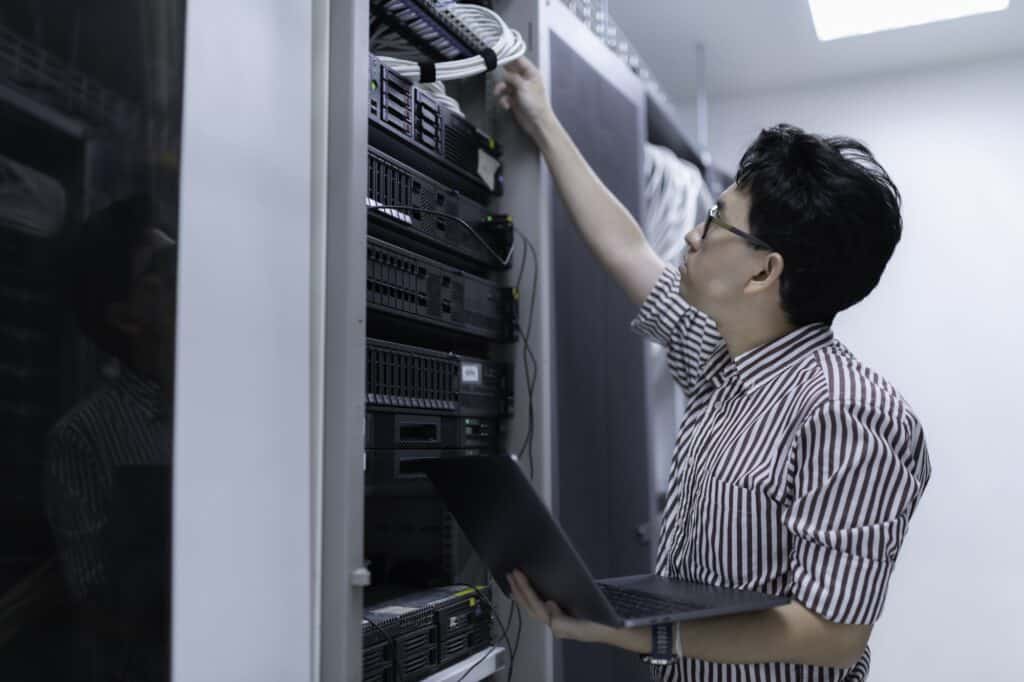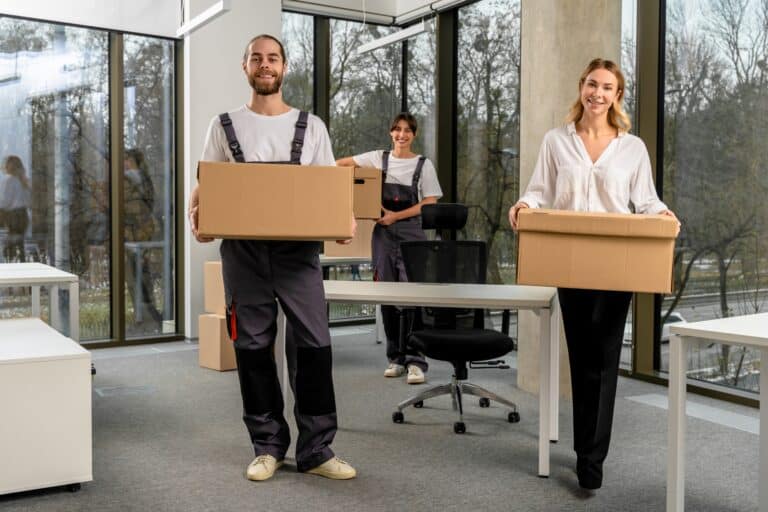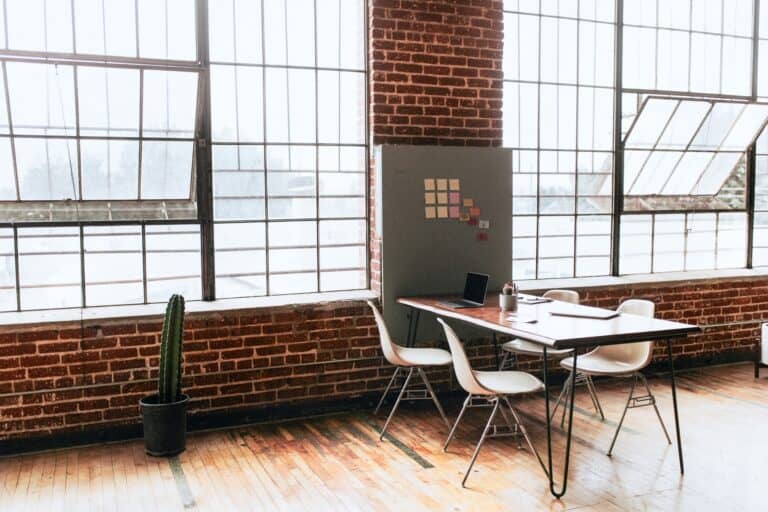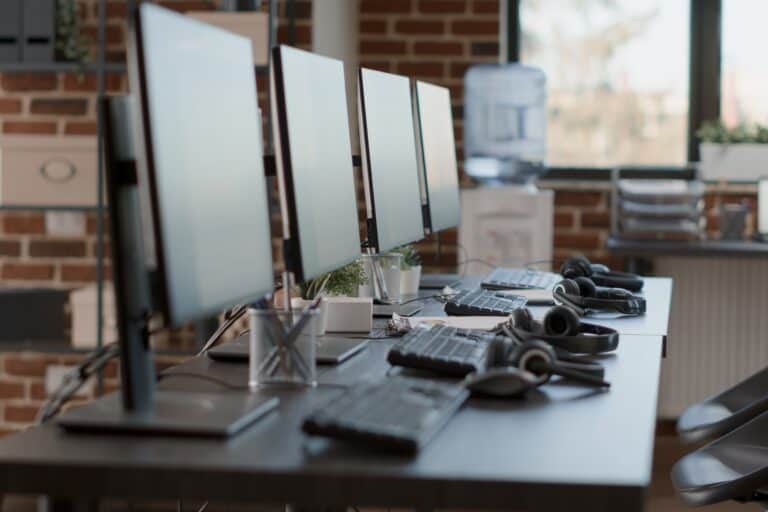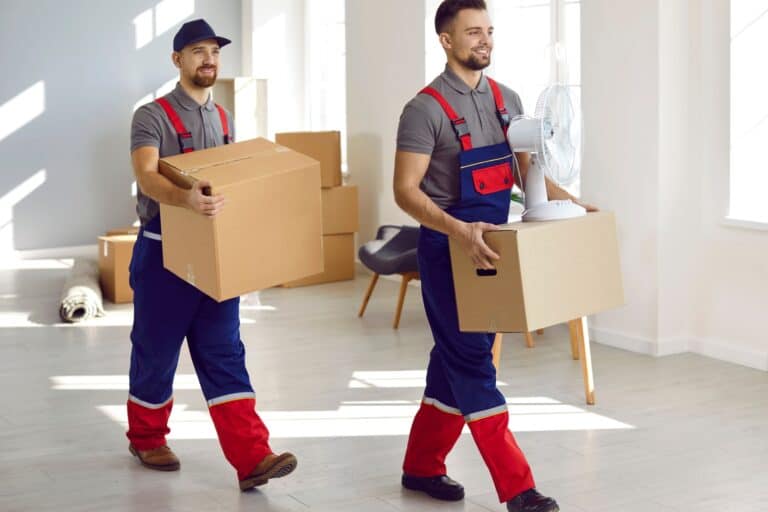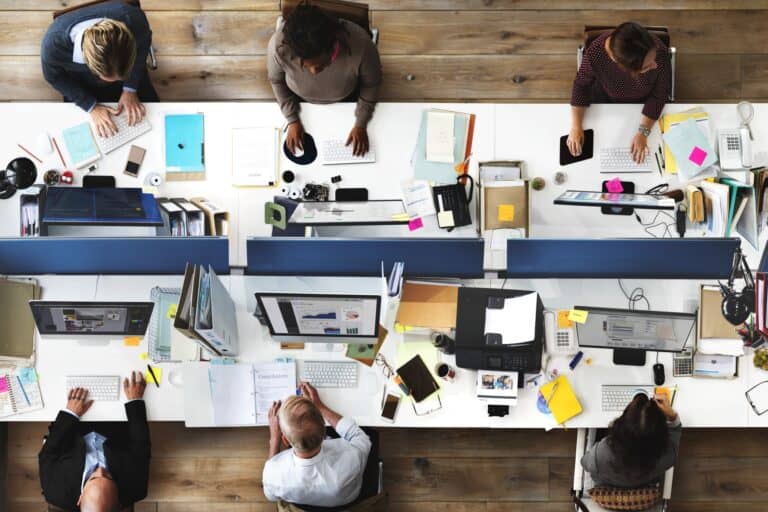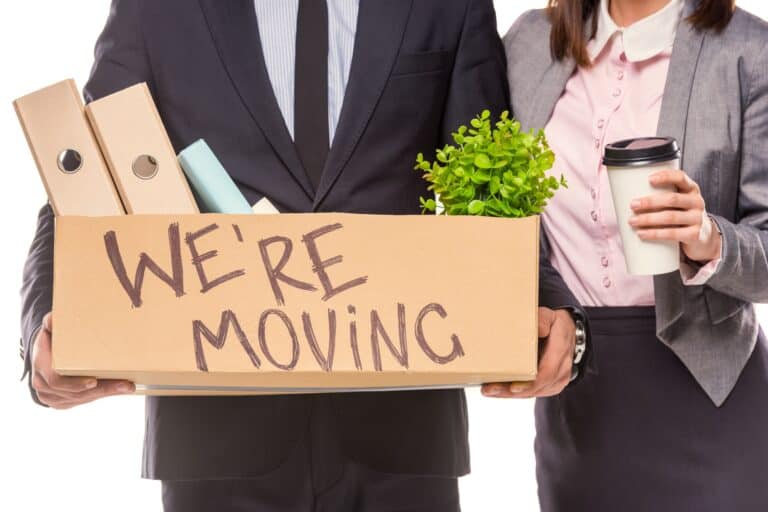Need to know how to pack office equipment and furniture for a move? This comprehensive guide provides you with essential steps and packing tips to ensure a smooth office relocation. From desks, chairs, and electronics to fragile items, you’ll learn how to use the right packing materials and techniques to protect your valuable office furniture and equipment. Whether you’re moving to a new office space or setting up a home office, this guide ensures your items remain safe and secure during transit.
Key Takeaways
- Properly packing office furniture and equipment is essential to prevent damage during transport and ensure a smooth relocation.
- Utilising appropriate packing materials, such as bubble wrap, moving blankets, and sturdy boxes, enhances protection for both fragile and bulky items.
- Organising and labelling items before moving aids in unpacking and setup, significantly decreasing the potential for mishaps and ensuring a timely transition.
Preparing Office Furniture for Moving to Streatham
Properly packing office furniture is crucial for a successful move. Proper preparation and the use of appropriate packing materials can safeguard your office items during the moving process. This not only protects your investment but also makes the relocation process significantly smoother. The first step involves preparing your office furniture, including desks, chairs, and filing cabinets, to ensure they are ready for transport.
Packing office furniture correctly prevents damage and ensures everything arrives at your new office in pristine condition. From desks to filing cabinets, each piece of furniture requires specific packing techniques to pack furniture and ensure its safety during transit.
Desks
Desks are often the centrepiece of any office, and their safe transport is vital. Furniture blankets protect desks during transportation. These blankets provide cushioning and help prevent scratches and dings that can occur during transit. Once the desk is covered with a furniture blanket, wrapping furniture securely with plastic wrap keeps the blankets in place and protects against moisture.
Dismantling any removable parts and packing them separately further ensures desk safety. This reduces the risk of damage and makes the desks easier to move. These practices ensure your desks arrive in good condition.
Chairs
Office chairs, though robust, can be susceptible to damage during a move. Bubble wrap effectively safeguards them. This packing material provides a cushioning effect that protects the chairs from impacts. Securing the bubble wrap with packing tape ensures that it stays in place throughout the move.
Securing bubble wrap with packing tape keeps chairs well-protected during transport. These steps help ensure your office chairs arrive without damage, ready to provide comfort and support.
Filing Cabinets
Filing cabinets are crucial for office organisation, and their safe transport is vital. Ensure they are completely emptied to prevent items from shifting and causing damage during the move. Securing the drawers with packing tape helps prevent them from opening during transport.
To protect the exterior of the filing cabinets, wrap them in moving blankets or stretch wrap. This will help prevent scratches and other damage during transit. Proper preparation ensures your filing cabinets arrive ready to be filled with important documents.
Packing Office Electronics

Office electronics are among the most sensitive and valuable items you will need to move. Packing these devices securely and organising them is crucial for a smooth relocation. Start by disconnecting and packing all cords securely. Labelling cords and connections can simplify the setup process in your new office.
After the move, thoroughly test all electronics to confirm they are functioning correctly. By following these steps, you can ensure that your office electronics are well-protected and ready for use in the new office space.
Now, let’s cover the specifics of packing computers, printers, and other office electronics.
Computers
Computers are the backbone of any modern office and need to be packed with utmost care.
- Remove any cables and discs from the computer.
- Use paper padding and moving blankets to provide extra protection when packing the computer.
- Choose the right moving boxes or TV boxes to ensure the computer remains secure during transit.
Pack the computer carefully into the selected box, using padding materials to provide extra protection. This keeps the computer safe and makes the unpacking process easier.
Printers
Packing printers requires special care to prevent damage to their delicate components. Remove the toner cartridges and store them in a dust-proof bag to prevent leaks or damage. Proper packing ensures your printer remains in good working condition and ready for use.
Other Office Electronics
Other office electronics, such as flat-screen televisions, require careful packing to ensure their safety. Use the original box whenever possible. If not available, sturdy cardboard boxes or wooden crates are good alternatives. For packing big-screen TVs, LCD TVs, and flat-screen TVs, double-boxing with packing paper for padding is recommended.
Proper packing of office electronics not only protects them during the move but also ensures they are ready for immediate use in the new office space. Using proper packing materials and techniques prevents damage and extends the life of your valuable equipment.
Protecting Fragile Items
Fragile items require special attention during a move to ensure they remain intact and undamaged. Each fragile item should be individually wrapped to provide additional protection against impacts. Sturdy boxes with additional padding minimise breakage.
Clearly labelling boxes containing fragile items is crucial for ensuring they are handled with care during the move. These steps protect your fragile items and ensure they arrive safely.
We’ll explore specific techniques for packing glassware, lamps, and artwork.
Glassware
Glassware is particularly susceptible to breakage during a move. Bubble wrap cushions glass items, and packing peanuts fill empty spaces in the box. Each glass item should be wrapped individually with bubble wrap before placing them in a box, and they should be transported in an upright position.
Proper packing and labelling boxes as fragile ensure glassware is handled with care. These steps are vital for preventing breakage and ensuring your glassware arrives intact.
Lamps
Lamps require careful packing to avoid damage. Each part of the lamp, including the shade, should be wrapped separately to provide adequate protection. Wrapping each lamp part properly ensures safety during transport and readiness for use.
Artwork
Packing artwork carefully ensures it arrives intact and undamaged. Wrap artwork on paper for protection and use padded materials to protect the painted face. Special picture boxes are ideal for framed pictures, while canvas paintings should be carefully wrapped and not packed together with photo frames.
Using cardboard to separate wrapped art pieces during transportation prevents them from touching and potentially damaging each other. These techniques ensure your valuable artwork arrives safely.
Utilising Packing Materials Effectively

The right packing materials protect your office equipment and furniture during a move. Sturdy boxes are essential, as flimsy boxes may not adequately protect items during transport. Extra tape on the bottom of boxes enhances durability and prevents bowing underweight.
Bubble wrap or packing paper cushions items and fills voids in the truck, preventing movement during transit. Now, let’s delve into using bubble wrap, moving blankets, and sturdy boxes.
Bubble Wrap and Packing Paper
Bubble wrap and packing paper are indispensable for protecting office equipment during a move. Ensure the bubble side of the wrap faces the object for optimal cushioning and protection. Using a generous amount of bubble wrap ensures that items remain secure and undamaged during shipping.
Packing paper fills gaps and provides extra cushioning, ensuring fragile items are well-protected. These materials safeguard your valuable office equipment.
Moving Blankets and Stretch Wrap
Moving blankets provide additional protection for bulky furniture and appliances during a move. Stretch wrap, a highly elastic plastic film, secures the blankets in place, preventing movement and damage during transport. It also protects items from dirt and moisture, ensuring they remain clean and dry.
Moving blankets and stretch wraps together enhances protection and reduces the risk of damage during transport. This combination is particularly effective for larger items like desks and filing cabinets.
Sturdy Boxes and Packing Tape
Sturdy boxes are vital for ensuring the safety of packed items during a move. Original boxes provide the best protection, but sturdy boxes are a good substitute. Choose the right size boxes: heavy items in smaller boxes and lighter items in larger ones.
Using high-quality packing tape ensures that the boxes remain securely sealed throughout the moving process. Heavy-duty tape provides a stronger seal, keeping boxes closed and items safe.
RECOMMENDATION
To ensure the safety of your office equipment during a move, invest in sturdy boxes, ample bubble wrap, and reliable packing tape for secure and effective packing. Utilise moving blankets and stretch wrap to protect larger furniture pieces, keeping them clean and stable throughout transport.
Loading the Moving Truck
Loading the moving truck is a critical step in the relocation process. Employing professional movers can reduce the risk of injury and ensure the safe relocation of heavy furniture. Marking boxes containing electronics as fragile alerts movers to handle them with extra care.
Labelling boxes containing fragile items ensures they are handled with necessary caution. These steps ensure all your items are safely loaded and ready for transport. Here’s how to load heavy items first.
Heavy Items First
Loading heavy items first creates a stable base for the rest of the load. Placing heavy items at the bottom also helps distribute weight evenly, reducing the risk of tipping during transport. This method not only ensures the safety of heavy items but also provides a solid foundation for loading lighter items on top. This practice makes the loading process more efficient and secure.
Filling Empty Spaces
Filling empty spaces prevents items from shifting during transit. Gaps between items should be avoided to ensure safety and stability in the vehicle. Carefully filling these spaces ensures a safer and more stable move.
Securing Fragile Items
Securing fragile items ensures their safe transport. Fragile items should be handled with care during packing, and proper planning is crucial to protect them. Ensure that the bottom of a lamp is secured when packing to guarantee stability and protection during transport. Do not place fragile items in heavy packages, as this can lead to damage.
These steps ensure your fragile items are well-protected and arrive safely. Properly securing all your items, especially the fragile ones, is the key to careful planning for a successful and stress-free move.
Summary
Moving your office to Streatham can be a seamless experience with proper planning and the right packing techniques. We discussed the importance of preparing office furniture, packing office electronics, protecting fragile items, and utilising packing materials effectively. Each step, from using sturdy boxes and packing tape to securing fragile items and loading the moving truck, plays a crucial role in ensuring a successful office relocation.
Remember, the key to a smooth move lies in meticulous preparation and the use of appropriate packing materials. By following these best practices, you can protect your valuable office equipment and furniture, ensuring they arrive at your new office space in excellent condition. With these tips, your office move can be a stress-free and efficient process, setting the stage for a fresh start in Streatham.
Frequently Asked Questions
Why is it important to use furniture blankets and plastic wrap for desks?
It is important to use furniture blankets to cushion desks and prevent scratches, while plastic wrap secures the blankets and protects against moisture. This helps ensure your furniture remains in optimal condition during transportation or storage.
How should fragile items like glassware be packed?
To ensure the safe transport of fragile items like glassware, each piece should be individually wrapped in bubble wrap and placed in a sturdy box filled with packing peanuts, while clearly labelling the box as fragile for careful handling. This method significantly reduces the risk of damage during transit.
What should be done to prepare filing cabinets for a move?
To prepare filing cabinets for a move, empty them completely, secure the drawers with packing tape, and wrap the cabinets in moving blankets or stretch wrap to protect them from damage. This will help ensure a smooth and damage-free relocation process.
How can empty spaces in the moving truck be filled effectively?
To effectively fill empty spaces in a moving truck, use packing materials such as crumpled paper or packing peanuts. This will prevent items from shifting during transit and ensure their safety and stability.
Why is it important to use high-quality packing tape?
It is essential to use high-quality packing tape to ensure that boxes remain securely sealed, which protects your belongings during transport. This stronger seal minimises the risk of items being damaged or lost.
